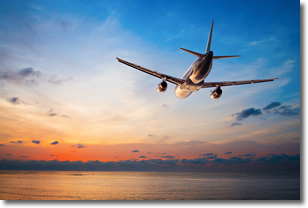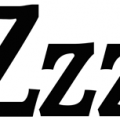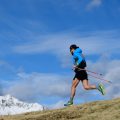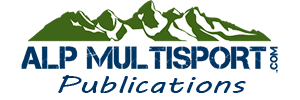Everyone has heard of the circadian clock that coordinates our biological activities around a daily cycle of roughly 24 hours. But recent studies have pointed to the idea that we actually have multiple clocks—different ones for different organs. So when you cross time zones, you do not simply disrupt a master circadian clock but all of these clocks. An important implication of this knowledge is that to adjust your body to a new time zone, you need to approach the task from multiple angles.
For specific tips on how to deal with jetlag, check out my article on the TrainingPeaks blog, “How to Minimize Jet Lag When Crossing Time Zones to Race.” To supplement that article, below I provide a few sample itineraries to show how the tips discussed in the article might be put into action.
Trip 1: Denver to Kona
Flight time from Denver to Kailua-Kona is just under 7.5 hours for a non-stop flight. Making a stop in Los Angeles or San Francisco will add a few more hours to the travel time, but can also provide you an opportunity to stretch your legs before the longer 5.5 hour leg from the west coast to Hawaii.
The time difference between Colorado and Hawaii during the months that Daylight Saving Time is observed is four hours (Hawaii does not observe Daylight Saving Time); otherwise it is five hours during the winter months. So that means the time in Hawaii is four hours earlier than in Colorado if you are traveling for either the Ironman 70.3 Kona in May or the Ironman World Championship in October.
For me, flying west into an earlier time zone is always easier than the opposite journey. In addition, the flight times between Denver and Kailua-Kona are conducive to minimizing sleep disruption. If you book a flight that leaves Denver at 11:55 am MST, this allows you to wake up at a normal time, perhaps get in a short workout to loosen up, and get to the airport a few hours ahead of time. Once on the plane, you can relax with some reading or movies until you touch down in Kailua-Kona at 3:15 pm HST (7:15 pm MST).
When you arrive in Hawaii, your body will think it is 7:15 pm. By the time you get checked in to your accommodations, eat dinner (unless you ate on the plane), and get settled, you will be feeling pretty tired even if the local time is only 6:00 pm at that point. Instead of trying to stay up, on that first night I like to get to bed around sunset and enjoy a long slumber; and it is easy to do this given that the sun sets earlier in Hawaii than in Denver during racing season.
After a long sleep, I’m up early and ready to work out. I see this as an advantage given the early start of races. Although the body acts like it is 9:00 am, it is actually 5:00 am as you prepare for the day ahead. Your body will gradually adjust over the next several days as you stay up later; but if you arrive only a few days before the race you can take full advantage of your extra level of morning alertness on race day.
Trip 2: Denver to Zurich
I always find traveling east much more difficult than traveling west, and that difficulty is compounded when the time difference is greater. It often takes me a good week or two to fully adjust to a new time zone in Europe when traveling from the US.
For a trip of that distance, many people schedule a few extra weeks of vacation on one end or the other. So if you are traveling to race in Europe, you might consider arriving one to two weeks before the race to allow yourself time to adjust. By that time, your major training sessions will be in the bank; plus you can use the time to scout out the course. An alternative option would be to arrive within a day or two of the race so you can do the race before your body figures out what is going on.
In this example, let’s say you are flying from Denver to Zurich for Ironman Switzerland. The time in Denver is eight hours earlier than Western Europe during the summer, so you will move your watch ahead eight hours upon arriving in Switzerland. Flying from Denver, you will need to make at least one connection with a total travel time of around 13 hours; the main leg from the US to Europe is typically an overnight flight of around 8.5 hours.
So let’s say you depart Denver at 11:10 am on a 3.5 hour flight that arrives in Washington, DC at 4:35 pm EST (2:35 pm MST). You then have a layover of an hour with your next flight departing Washington, DC at 5:40 pm EST (3:40 pm MST) and arriving in Zurich at 8:05 am the next day (just past midnight MST). This is where the tips discussed in the previous article come in handy. You need to deal with the fact that your body thinks it is the middle of the night when the day at your destination is getting into full swing. Here’s what you might do if you have this itinerary to facilitate the adaptation to the new time zone.
Treat the overnight flight from DC to Zurich as bedtime. Wake up earlier than usual on your travel day; this will generate some fatigue later in the day to make an earlier than usual “bedtime” easier. On the first flight during the afternoon, drink some chamomile tea and relax as much as possible but avoid any napping. Eat a good dinner during the layover (or at the end of the first flight).
As soon as the second flight takes off, consider that your cue to go to sleep for the night. Find a comfortable position—a window seat can allow you to rest your head to the side—put on an eye mask and earplugs to block ambient light and noise. Melatonin, as discussed in the previous article, can be very beneficial to help you fall asleep. The flight is 8.5 hours, which means you should dedicate a good six hours of the flight to sleeping. If you cannot sleep or if you wake up after falling asleep; simply rest with your eyes closed. If you get close to six hours of sleep/rest, you will have succeeded in your task.
When you arrive in Zurich, your next task is to stay awake throughout the full day. Go outside in the morning and as much as possible during the day to take advantage of the natural light cues. Stay busy outside and the day will go fast; this can be a good day to explore some sights. Avoid lounging around inside, which may prompt you to fall asleep. If you work out, it should be a very easy workout; not one that will cause you to fall asleep in the afternoon. Go for an easy walk outside during the afternoon and perhaps do some yoga or stretching as an alternative to a swim, bike or run. In the middle of the summer, the sun won’t set in Zurich until after 9:00 pm; try to stay up as close to that time as possible before you turn in for the night.
Although you will be ready for a good night’s sleep and you will sleep deeply for several hours once your head hits the pillow, you will likely wake up in the middle of the night wide awake because your body, still on Colorado time, will think it is late morning. Do not get up to eat even if your stomach growls at you. Try to relax with your eyes closed until at least within an hour of sunrise. When you get up; then you’re up for the full day with no napping. Again, get outside as much as possible during the day and follow the eating schedule at the new time zone.
The Bottom Line
Jet lag is never fun but it can be managed. The more experience you gain with crossing time zones and the better you know your own body, the easier it will be to deal with. Check out the TrainingPeaks article for a full discussion on the strategies alluded to in the sample itineraries above. Then you can adapt the strategies to your own travel plans to minimize jet lag.
If you’ve traveled across multiple time zones, you are familiar with the way jet lag can wreak havoc on your sleep cycle. Jet lag can leave you feeling sluggish when you need to be energetic and with eyes wide open when you need to be sleeping. Of course, after sufficient time spent in the new time zone, your body adjusts accordingly. But if you need to be ready to race or train when you land at your destination, how can you speed up that adjustment process and minimize the impact of jet lag?
Additional resources:








